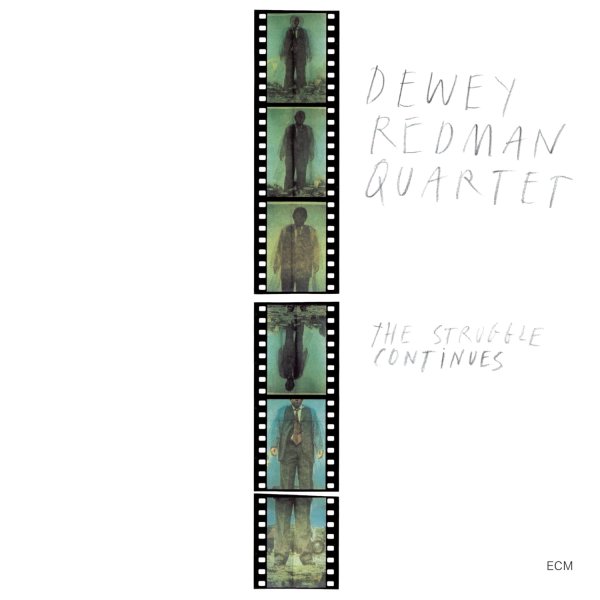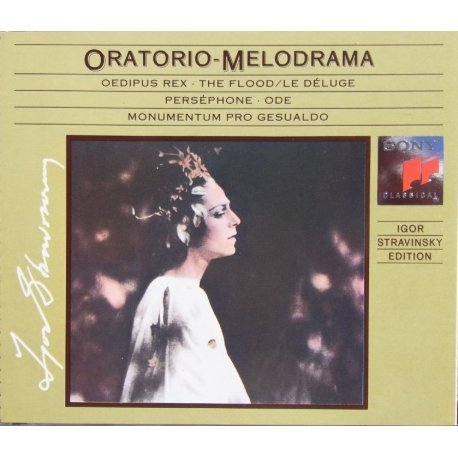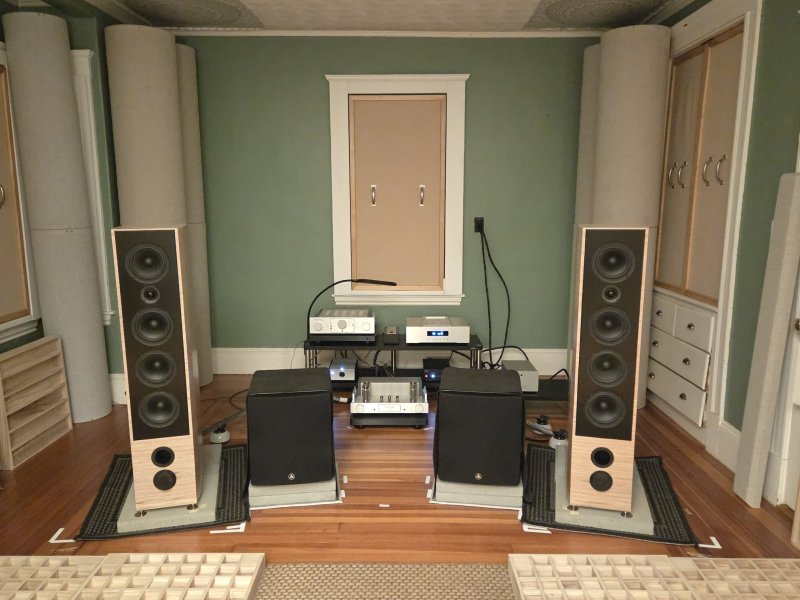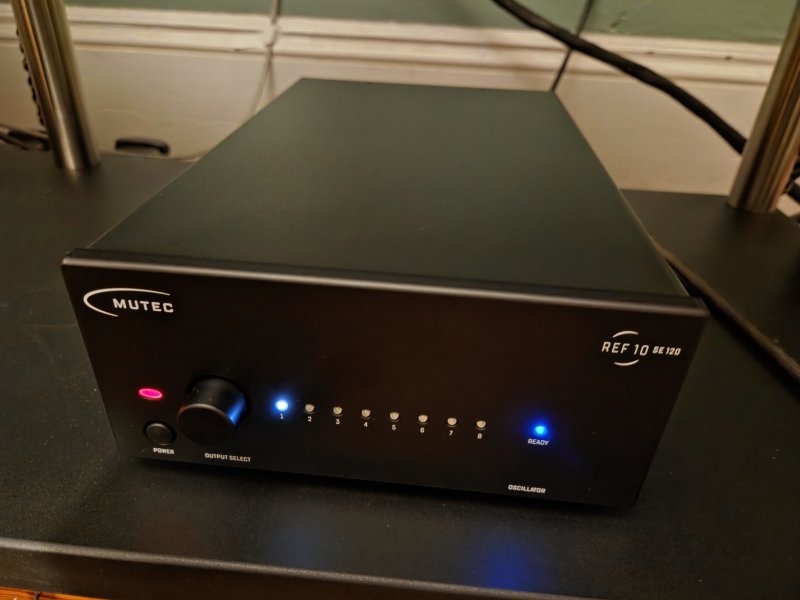Now on to some listening. Just as a statement upfront, the Mutec REF10 SE120 clock did not make a clearly audible difference on all music, in the context of my digital set-up, which is already very low in jitter to begin with, and of my system. However, as you will see, I find it very worthwhile for the kind of improvements that I heard, as in the examples described below.
I made sure that my impressions held up repeatedly and consistently on several different days; I am not a fan of reporting on subtle yet meaningful differences in sound and musical presentation in a casual manner.

The album "The Struggle Continues" by Dewey Redman is an excellent recording on the ECM label (ECM 1225). On the funky 3rd track, "Turn Over Baby", Dewey's tenor saxophone has an incisive yet warm, rich, full sound. Without the clock the sound is still warm, but this is somewhat deceiving. Close listening reveals that the sound, despite the warmth, also has a slight dryness and is harmonically just not quite as rich as with the clock being active. This of course is relative; without the direct comparison you might not even notice the slight dryness with the Mutec clock left out of the chain (the recording is generous in tone to begin with). In the context used, the clock really is for maximizing an already excellent digital reproduction. -- The saxophone playing is also somewhat more incisive with the clock active.
After a stormy beginning, track 2 ("Love Is") features a very softly played saxophone solo of exquisitely mellifluous, buttery phrasing. Without the clock there is again a bit more dryness of tone, which makes for less of a buttery flow of the sax solo. As before, by normal standards the sound without the clock is still excellent, but with the clock active it is even better and highlights Dewey Redman's artistry even more.

Jennifer Higdon is one of the most performed living American composers of classical music. Her orchestral piece "blue cathedral" has been played all over the world 1,100 (!) times since its premiere 25 years ago, see:
Below are some impressions from listening to Jennifer Higdon's Concerto for Orchestra. I listened to the Telarc CD (CD-80620).
Here is a video of another, live, performance, showing the instruments played:
The slow movement (starting at 14 min in the video) begins with violins playing in the extreme high register. When soon after the violas start to play, it sounds more focused and more calm with the 10 MHz clock. The playing also sounds slightly quieter. The sound of the ensuing solo flute, further back on the stage, is surrounded by a lot of air. Yet with the clock active, there is even more air. The flute solo also sounds calmer with the clock, as well as more pure. It sounds more 'lonely' as well, fitting for the musical expression. The polyphony in three flutes that starts after another phrase for violas and lower strings unfolds even more serenely with the clock in play. The music in the piccolo flute that ends this brief section soars more cleanly and distinctly.
There is magic in the additional calmness brought to the described musical passage by the 10 MHz clock.
The second movement is written exclusively for strings, and the string textures are forging an intriguing equilibrium between luminescence and dissonance (as heard on the high-quality Telarc CD; the audio quality of the string sound in above video is relatively crude in comparison). Without the clock, the sound slightly shifts away from luminescence, which makes it flatter and more emphasizes dissonance. The result is a bit more pedestrian in texture than with the clock active.

Similarly, in part II of Stravinsky's colorfully textured oratorio Persephone (Stravinsky conducts Stravinsky; Sony SM2K 46 300), at 2:20, there are also string parts that are luminescent and somewhat dissonant at the same time, yet the tone is sweeter than in the Higdon concerto. Again, some of the luminescence is lost without the external Mutec clock, and the texture is flatter.
At 19:20 in the same part II there is an ensemble of collective solo strings, which accompanies the expressive speaking voice of Persephone with a soaring, floating texture full of life and delicacy. Some of that delicate filigree is lost without the external clock, the sound is "straighter" and less alive. As a consequence, the string texture loses the lightness of floating and with it, its beguiling magic.
After about 2 minutes into part I the chorus, here apparently a mix between female voices and children's voices, begins to sing. Its sound and texture are uncommonly beautiful and airy. Without the external clock the sound is less firm in its solidity, and at the same time its characterful and pronounced airiness loses some of its strength and clarity. The sound is softer and more veiled, and somewhat smaller in expanse.

Hilary Hahn has recorded an album of the complete violin sonatas (DGG 486 4176), six of them, on occasion of the 100-year anniversary of the composer"s writing of these sonatas in July 1923. The album features spectacular performances and sonics; it was recorded in Hahn's favorite recording venue, the Fraser Performance Studio in Boston.
When listening to the vigorous beginning of the 2nd movement of the 5th sonata (track 14), the articulation of the violinist's playing is more palpable and fleshed out with the Mutec clock in the chain, and the playing is more nimble and alive. Without the clock, the musical articulation of the performance is slightly flatter and slightly less expressive.
Overall, with the clock inserted, there is a bigger, more energetic, bold, confident and open sound coming from the violin. Quieter passages maintain their character or sound even more refined.

Beatrice Rana is an excellent young Italian pianist. Together with a friend, who had introduced me to her artistry, I had the pleasure to experience her playing live last year at Boston's Jordan Hall with its wonderful acoustics, in truly compelling performances. The piano on the CD (Warner Classics 5054197897658) of her playing Chopin's Piano Sonata 2 and Beethoven's Hammerklavier sonata (she played the latter also in that concert), has a warm, full sound. While that character is maintained with the Mutec REF10 SE120 feeding the CD transport, the insertion of the clock slightly increases sparkle on the notes, substantially increases articulation, and with that makes the music livelier.
As a result, the beginning of the scherzo of Chopin's sonata (track 2 of CD) sounds truly ferocious, while without the clock the music is slightly heavier and less agile, somewhat duller sounding and not quite as dramatic.
Increased articulation and sparkle of tone with the Mutec 10 MHz clock in the chain, apparently better timing and more organic and gripping flow are also beneficial in the Beethoven sonata, which receives a passionate and exciting interpretation. At the beginning of the scherzo (track 6 of CD), the now better articulated notes are more separated with the clock. Without it, they seem to slightly run into one another in lines that in comparison sound somewhat muddy. Micro-dynamics, the small volume changes as the phrases are shaped, are also better expressed with the clock active.
In the complex fugue of the last movement of the Beethoven sonata (track 9), the music with its diverse simultaneous strands is easier to follow with the Mutec REF10 SE120 in the chain. The notes blur less into one another, rather, they are presented in clean lines. Beatrice Rana seems a better musician with the clock in service of a more accurate reproduction of her splendid performance of the piece, and the music just seems clearer. The whole musical experience is improved to be more immersive and compelling. Isn't this what the high end is all about?
***
Finally, I'll give an example where the 10 MHz clock indeed does not make a difference anymore, unlike with the Simaudio Moon 260 DT, because the CDT3 is just so good already.
I had been listening to the configuration Simaudio Moon 260 DT transport > Mutec MC3+ USB > Tambaqui DAC, when I took notes on the differences with or without the Mutec REF10 SE120 feeding the Mutec MC3+ USB.
Here are my notes on the trumpet fanfares at the beginning of Stravinsky's opera "The Rake's Progress”:
"Here a spectral "fanning out" without the 10 MHz clock causes the sound to be both sharper and more diffuse -- again affecting the flow with smearing as well. With the clock in place, the sound is more controlled, temporally and timbrally, and focused."
It turns out that with the CDT3 I cannot hear a difference on this passage if the CD transport is fed the signal from the 10 MHz clock or not.
I have to say that in general the Jay's Audio CDT3 is so good that even without the external 10 MHz clock it sounds better and cleaner than the Simaudio Moon 260 DT de-jittered with the Mutec REF10 SE120 clock controlling the Mutec MC 3+ USB reclocker.
Yet the combo of CDT3 with external Mutec REF10 SE120 10 MHz clock is the icing on the cake. After hearing the meaningful differences that it brings to the music, I cannot imagine my system anymore without the Mutec clock in it.
I received my unit, and the Mutec cables for it, from Alex Crespi at UpTone Audio who recently became a Mutec dealer. The service that Alex provides is impeccable and he was very helpful with answering all my technical questions in depth and great detail. Few dealers will have such technical expertise and will engage with the customer as much as he does.


















